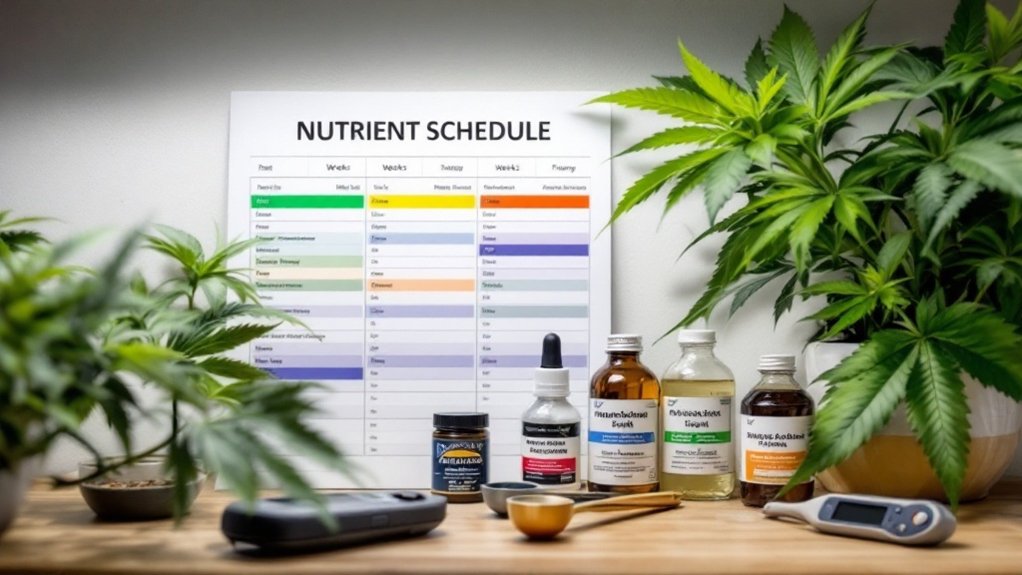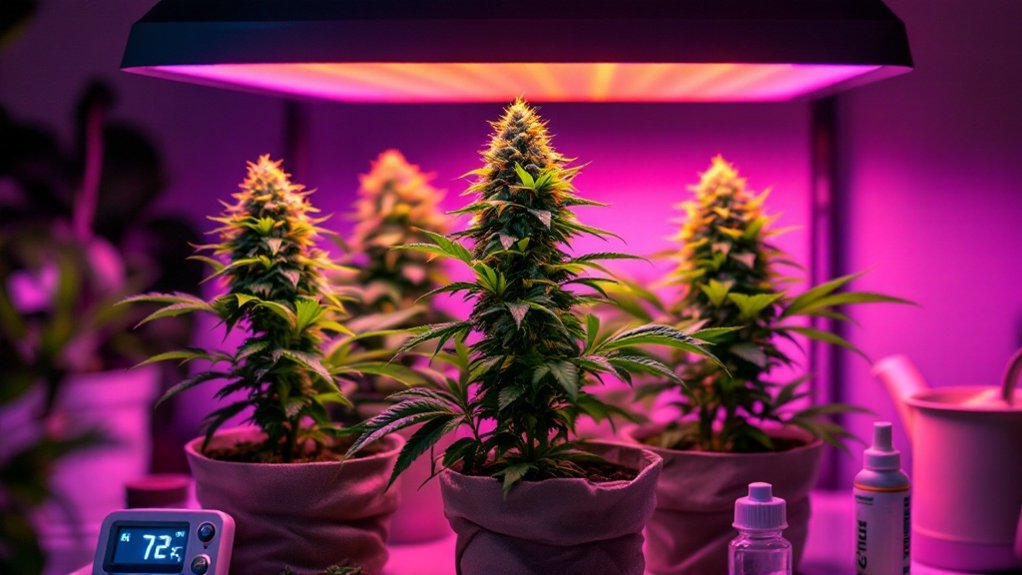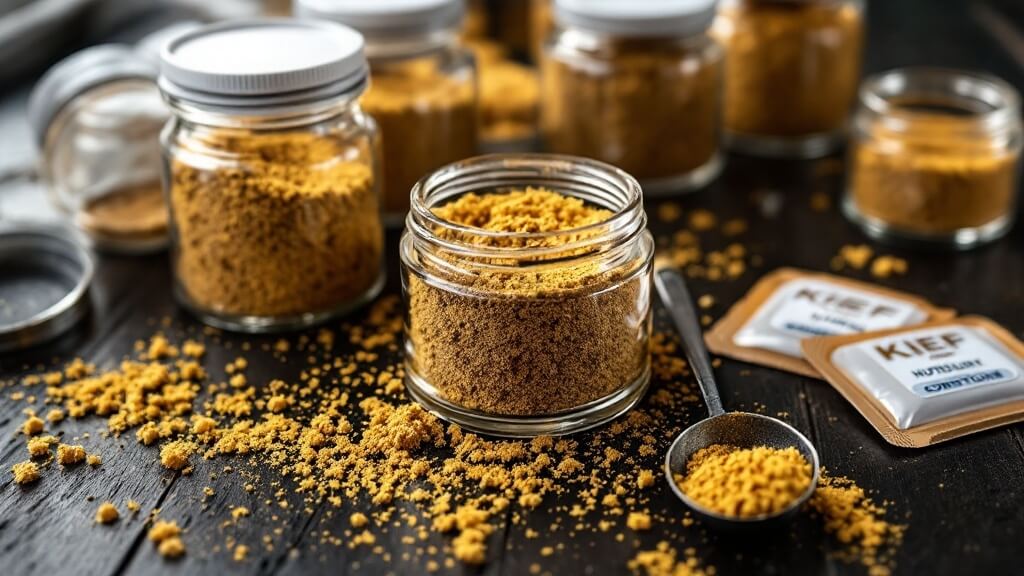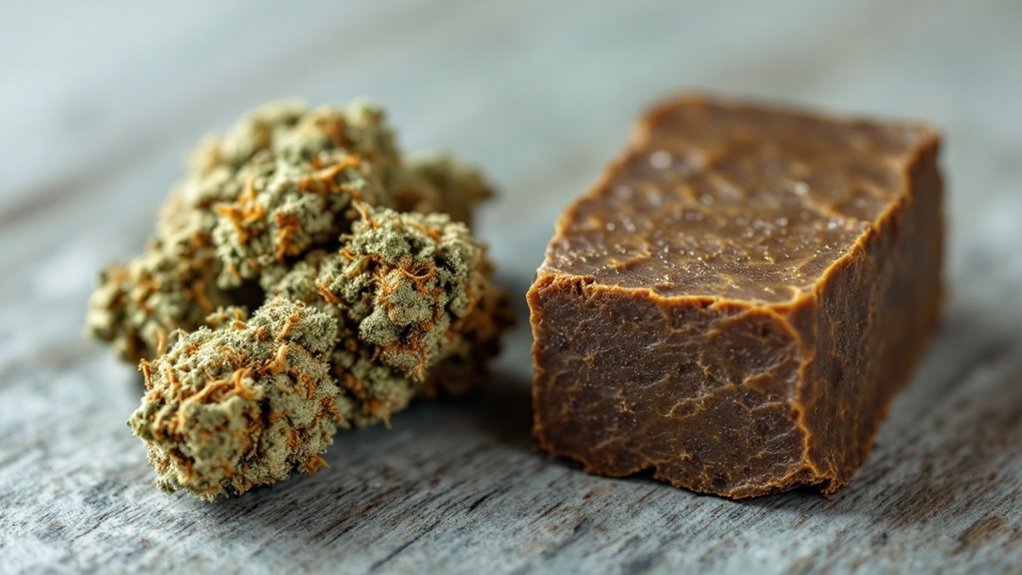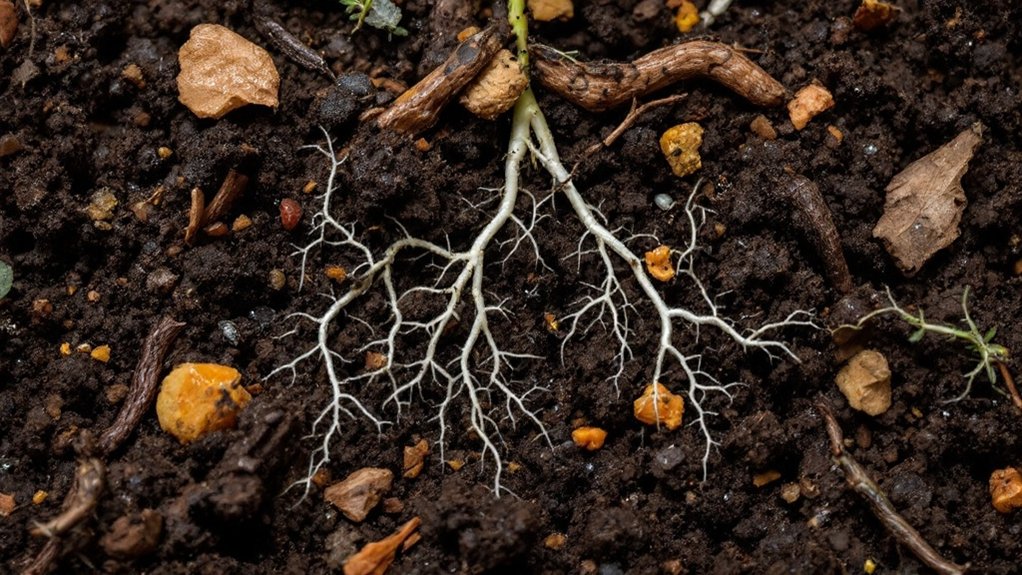Cannabis requires different nutrients throughout its lifecycle. During the vegetative stage, plants need nitrogen-rich fertilizers applied weekly, while the flowering stage demands more phosphorus and potassium with twice-weekly feedings. Beginners should follow feed charts, maintain proper pH levels (5.5-6.5 for hydroponics, 6.0-7.0 for soil), and watch for deficiency symptoms like yellowing leaves. Regular monitoring of plant health allows for timely nutrient adjustments as the plant progresses through its growth stages.
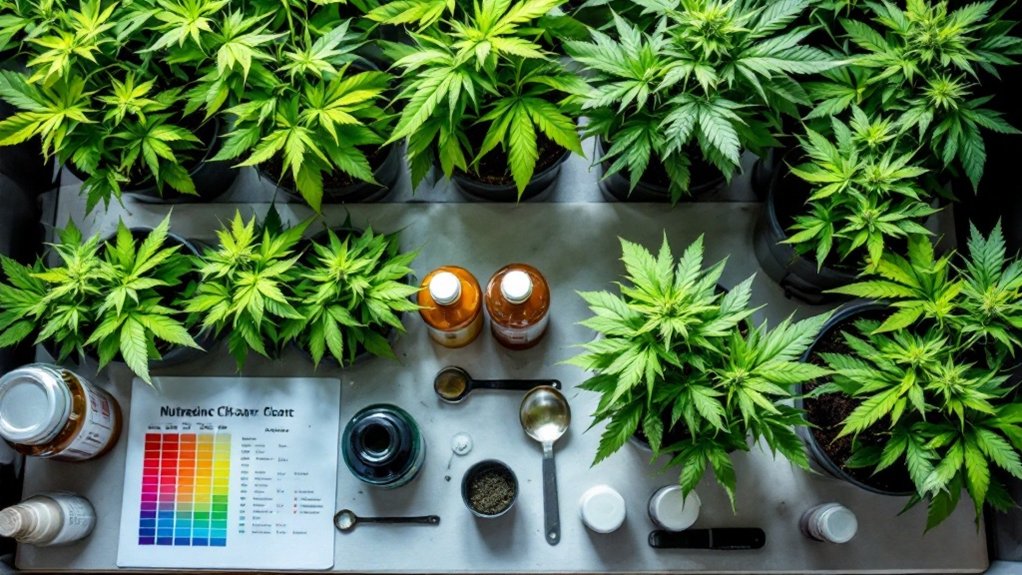
While cannabis plants require attentive care throughout their lifecycle, understanding the proper nutrient schedule remains one of the most critical aspects of successful cultivation. Cannabis progresses through three main growth stages—vegetative, flowering, and ripening—each demanding specific nutritional requirements for peak development.
During the vegetative stage, plants benefit from high nitrogen levels, which support the rapid production of stems and leaves that form the plant’s structural foundation. The shift to flowering stage marks a significant change in nutrient needs, with phosphorus and potassium taking priority to facilitate bud development. During this phase, ensuring adequate levels of essential micronutrients can further enhance plant health and productivity.
Cannabis’s nutritional journey transforms from nitrogen-rich vegetative growth to phosphorus-potassium dominance during flowering, mirroring its evolving physiological needs.
Cannabis plants typically follow a 12-13 week growth cycle, with feeding frequency varying according to growth stage. Most cultivators implement once-weekly feedings during vegetative and ripening phases, increasing to twice-weekly during the flowering stage when nutrient demands peak. This schedule must be adjusted according to environmental factors, water quality, and the specific nutrient product line being used. Feed charts provide visual guidance for nutrient application with growth stages displayed along the x-axis of the chart.
Macronutrients—nitrogen (N), phosphorus (P), and potassium (K)—form the cornerstone of cannabis nutrition, while micronutrients like iron, zinc, calcium, magnesium, and sulfur support essential metabolic functions. Cannabis relies heavily on nitrogen during early growth for leaf development, then shifts to phosphorus and potassium during flowering to support bud formation.
During the final ripening stage, calcium and magnesium become increasingly important for bud density and maturity, requiring careful nutrient adjustments. Growers must decide between organic and chemical fertilizers based on their cultivation goals. Organic options deliver slow-release nutrients that enhance soil biology, while chemical fertilizers provide precise control with readily available nutrients.
Many experienced cultivators utilize a blended approach to maximize benefits from both methods. The CANNA COCO Grow Schedule provides comprehensive feeding guidelines for cannabis grown in coconut coir medium throughout all growth stages. Regular plant inspection helps identify nutrient imbalances early, with symptoms such as yellowing leaves indicating nitrogen deficiency, purple stems suggesting phosphorus shortage, and burnt leaf tips pointing to potassium issues.
Proper preparation of nutrient solutions requires careful measurement and pH adjustment—typically 6.0-7.0 for soil and 5.5-6.5 for hydroponic systems—to guarantee peak nutrient uptake. Shifts between growth stages should involve gradual nutrient adjustments rather than abrupt changes, maintaining plant health throughout the cultivation cycle.
This methodical approach to cannabis nutrition maximizes yield potential while minimizing the risk of nutrient-related problems.
Frequently Asked Questions
How Do I Recognize Nutrient Deficiencies in My Cannabis Plants?
Nutrient deficiencies in cannabis plants manifest through specific visual cues.
Nitrogen deficiency causes yellowing of older leaves from the bottom up.
Potassium issues present as yellow or brown leaf margins with curling edges.
Phosphorus-deficient plants develop dark green or purplish leaves with stunted growth.
Micronutrient problems show varied symptoms: sulfur causes yellowing of new growth, molybdenum creates interveinal chlorosis, and silicon deficiency results in structurally weak plants.
Environmental factors like pH imbalances often exacerbate these conditions.
Is Foliar Feeding Better Than Soil Application for Cannabis?
Foliar feeding and soil application each offer distinct advantages for cannabis cultivation.
Foliar feeding provides rapid nutrient uptake directly through leaf stomata, potentially 8-20 times more efficient than soil methods, and allows for quick correction of deficiencies.
However, soil application delivers sustained nutrient release where plants naturally absorb nutrients—at the root level.
The ideal approach often combines both methods: soil feeding for baseline nutrition and foliar application for targeted, supplemental feeding during specific growth stages.
How Do Autoflowering Plants Differ in Nutrient Requirements?
Autoflowering plants require considerably lower nutrient concentrations compared to photoperiod varieties, typically needing only 50% or less of standard feeding regimens.
Their ruderalis genetics enable efficient nutrient utilization even in poor soil conditions.
During their accelerated 8-12 week lifecycle, autoflowers need a rapid change from nitrogen-focused vegetative nutrients to phosphorus and potassium-dominant flowering formulations.
These plants benefit from gentle, frequent feedings rather than large doses, as their compact size and quick development cycle make them particularly susceptible to nutrient burn.
When Should I Flush My Plants Before Harvest?
Flushing should begin approximately 10-14 days before harvest, when trichomes shift from clear to milky or cloudy.
For plants with 8-week flowering periods, this typically occurs around 6 weeks after flowering begins.
The growing medium influences timing: hydroponic systems require shorter flushes (5-7 days), while soil may need the full two weeks.
Proper flushing removes excess nutrients from the growing medium, forcing plants to utilize stored reserves and ultimately improving the smoothness and flavor of the final product.
